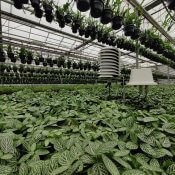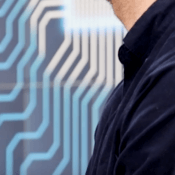Growing cherry tomatoes remotely
Together with Delphy and Wageningen University, 30MHz will be participating in the Autonomous Greenhouse Challenge this year as part of team Automators. The challenge is to grow a cherry tomato crop remotely in 6 months’ time. The tomatoes will not only be judged by their looks, but also by their taste.
We’re competing against 4 other teams that remained after the ‘pre-challenge’ in September, a 24-hour hackathon in which 21 international teams took part. From December onwards, WUR is giving us access to a greenhouse in Bleiswijk to start growing our cherry tomatoes remotely, with our own specially developed algorithms. During the first week of the challenge we’ll get one-time access to the greenhouse to install sensors, cameras and other equipment. After that, the doors will be locked for all candidates for 6 months.
The cherry tomatoes should not only grow and flourish, but they also have to taste good. In order to influence taste and structure, we can adjust the nutrient composition and the EC. Next to that, we’ll have to think about crop specific aspects, such as how are we going to prune the cherry tomatoes? Which LED-spectrum will we use? There will be LED and SON-T lamps available at the greenhouse. The LED lights can be dimmed, switched off, or the whole lamp spectrum can be changed. There’s a lot to control and finetune.
You might be thinking, is it really possible to grow a cherry tomato crop remotely? Well, not 100%. There will be people present at the greenhouse who will take care of, for example, leaf picking and harvesting. We won’t be using robots for that. However, it’s important to note that these people can only do what the team instructs them to do. The team can send them instructions via a special app. So they can’t intervene on their own initiative, even when they see the crop is not doing well.
 09-12-19 | The Automators meeting at Delphy
09-12-19 | The Automators meeting at Delphy
The goal of the challenge is to stimulate new developments and innovations in digital technologies for horticulture. Next to that, it also offers new insights into crop cultivation. There will be a control group of growers from the area, who will keep a close eye on the crops and the growing techniques that are being used. They can benefit from the crop information and learnings about data management and the use of digital tools, as they are able to apply them in their daily work. We’re very happy to see this growing collaboration between various disciplines. It creates synergy, which will help us further ensure a future-proof horticultural sector.
We’ve talked to Klaas van Egmond (team member The Automators), crop engineer at Delphy.

“During the challenge 30MHz and Delphy are very complimentary to each other. Where Delphy supplies the crop knowledge that is needed to develop these systems, 30MHz has the knowledge on how to engineer these systems and build the smart models that are needed.
How do you grow tomatoes remotely?
We grow tomatoes remotely by getting data from the crop and his environment. And use this data to create models to simulate the growth of the tomato plants. With this data and these models, we optimise the decisions we take in the growth process of the tomato plant.
Why is it important to digitise growing? How does it help the growers?
I think it’s important to digitise the management of crop cultivation because there is an increasing demand for food and flower production and fewer people to grow it. It helps growers by using artificial intelligence to prevent mistakes, to increase their span of control and to optimise their input versus output.
How do you see the future for digital agriculture?
The future of digital agriculture will bring together the dream of very large and high precision growing companies. Besides that I believe that there won’t be agriculture at all without all the smart digital systems that are being developed now.
More information: www.autonomousgreenhouses.com


30MHz is typing… Our extended support team is ready to chat!
At 30MHz we think it’s important that our users can use our platform in an optimal way. At times you may have questions and you would like some help from our support team. Email and our support page filled with helpful articles were your go to’s. But we thought it was time for something extra… ...Read more
New 30MHz connect casing: How we protect your tech
To make sure your dataflow is fully protected, 30MHz introduces a new connect casing: waterproof, dust proof and even resistant to hits. This special shield will last longer and ensure a reliable dataflow from the connected sensor. What does that full protection mean? That’s what we will explain in this article. Watertight: resistant to wetness ...Read more
Digital Twin at QING
For the innovation project Digital Twin from NXTGEN Hightech, several 30MHz colleagues came together with QING to exchange ideas about digital twins within the Agrifood sector of the future. Want to know more? Check out the (Dutch) video:Read more


